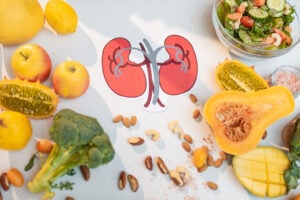Busting 8 Common Driving Myths

Driver hands on wheel driving car on city street
Driving myths are pervasive. You may have heard some of these before and not realized that they were myths. Others may be new to you. But regardless, it’s important to know the truth about these driving fallacies so that you can stay safe on the road. Here are 8 common driving myths, busted:
Myth 1: It’s better to hit a pedestrian than swerve into oncoming traffic.
This is a myth that can actually do more harm than good. If you swerve into oncoming traffic, you risk hitting multiple cars and causing a serious accident. Hitting a pedestrian may cause injuries, but it’s less likely to result in a multi-car pileup. So, if you’re faced with the choice, it’s actually better to hit the pedestrian.
Myth 2: You don’t need to signal if you’re turning right.
Wrong! You should always signal when you’re turning, no matter what direction you’re going. Failing to signal is one of the most common causes of accidents. By signaling, you give other drivers time to react and avoid an accident.
Myth 3: It’s safe to text while driving as long as you’re not holding the phone.
This myth is pervasive among young people. But the truth is that texting while driving is just as dangerous as talking on the phone or even drinking while driving. Your hands may not be on the phone, but your eyes are still off the road and your attention is divided. That increases your risk of getting into an accident.
Myth 4: You don’t need to wear a seatbelt in the backseat.
This myth is dangerous and it’s one that can actually lead to death in an accident. If you’re involved in a serious car accident, the impact can cause you to be ejected from the vehicle. Wearing a seatbelt increases your chances of staying inside the car and surviving the accident.
Myth 5: Bigger cars are always better.
This may be the most common driving myth of all. People tend to think that bigger cars are safer and will provide more protection in an accident. But that’s not necessarily true. The size of a car is just one factor that contributes to its safety rating. Other factors, like crashworthiness and driver assistance features, are also important. And while bigger cars may offer more protection in some types of accidents, they can also be more dangerous in others. For example, SUVs have a higher rollover risk than smaller cars.
Myth 6: You don’t need to worry about small dents and scratches.
Another common myth is that small dents and scratches won’t matter. But that’s not true either. Even small dents and scratches can affect the resale value of your car. And if they’re not repaired properly, they can lead to bigger problems down the road. For example, a small dent in your fender could eventually cause rusting and other damage. Take it from the experts: even small dents and scratches should be repaired by an auto body shop.
Myth 7: Premium gas is always better.
Another common myth is that premium gas is always better for your car. But that’s not necessarily true. In most cases, regular gas will do just fine. The only time you really need to use premium gas is if your car’s manufacturer recommends it. And even then, you might not see any significant difference in performance.
Myth 8: You don’t need to use your turn signals.
This is a myth that could get you into trouble. Turn signals are required by law in many states, so you could be pulled over if you’re not using them. Even if they’re not required, though, it’s always a good idea to use your turn signals to let other drivers know what you’re doing. It’s just common courtesy (and good driving etiquette).
There you have it: eight common driving myths that are nothing but myths. The next time someone tries to tell you one of these, you’ll be ready with the facts. Drive safe!




